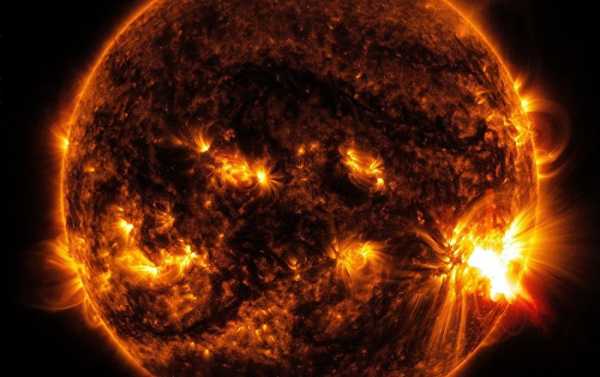
Earth is constantly bombarded by winds coming from the centre of our Solar System, yet the problem that has been puzzling scientists is why the solar winds that reach our planet are hotter than they should be, in defiance of the laws of physics.
New research seems to have solved the question of why particles making up the plasma of the Sun’s heliosphere – in other words, solar winds – take such a long time to cool as they reach our planet.
As the Sun expels plasma, laws of physics demand that the wind should cool as it expands through space. However, this doesn’t happen to the predicted degree.
According to a peer-reviewed study, “Electron temperature of the solar wind”, published in Proceedings of the National Academy of Sciences (PNAS), University of Wisconsin-Madison physicists offer an explanation for this discrepancy in solar wind temperature.
Physicist Stas Boldyrev from the University of Wisconsin–Madison and his colleagues, UW-Madison physics professors Cary Forest and Jan Egedal sought the answer in the related field of plasma physics.
The scientist adds that while originally researchers thought solar wind should cool rapidly as it expands away from the Sun, satellite measurements proved the opposite, as its temperature was occasionally “10 times larger than expected.”
In their research the team used laboratory equipment to study moving plasma to reach the conclusion that the solution lies in electrons that can’t escape the Sun’s grip.
Solar Plasma
Solar plasma is a mix of negatively charged electrons and positively charged ions, and as such is influenced by magnetic fields that extend into space.

The coronal mass ejection that occurred on May 13, 2013, after a solar flare.
Escaping the Sun’s corona, the hot plasma flows through space as solar wind.
Electrons in the plasma are much lighter particles than the ions, generating a speed some 40 times faster.
As more negatively charged electrons elude its grasp, the Sun takes on a positive charge, in turn rendering it more difficult for electrons to escape its pull, sometimes putting them back into its vicinity.
‘Mirror Machines’
When solar wind was first discovered, scientists had puzzled over how to confine plasm, developing “mirror machines”.
These were plasma-filled magnetic field lines shaped as tubes, with the charged particles in the plasma traveling along the lines to reach the bottleneck. The magnetic field lines are pinched, with the pinch acting like a mirror and reflecting particles back into the machine.
The team applied the same mirror machines theory to the solar wind, studying differences in the trapped and escaped particles.
The observations showed the very hot electrons escaping the bottle distributed their heat energy slowly to trapped electrons.
The team’s findings suggest ways to study solar wind phenomena further in research labs and learn more about solar wind properties in other star systems.
Sourse: sputniknews.com






